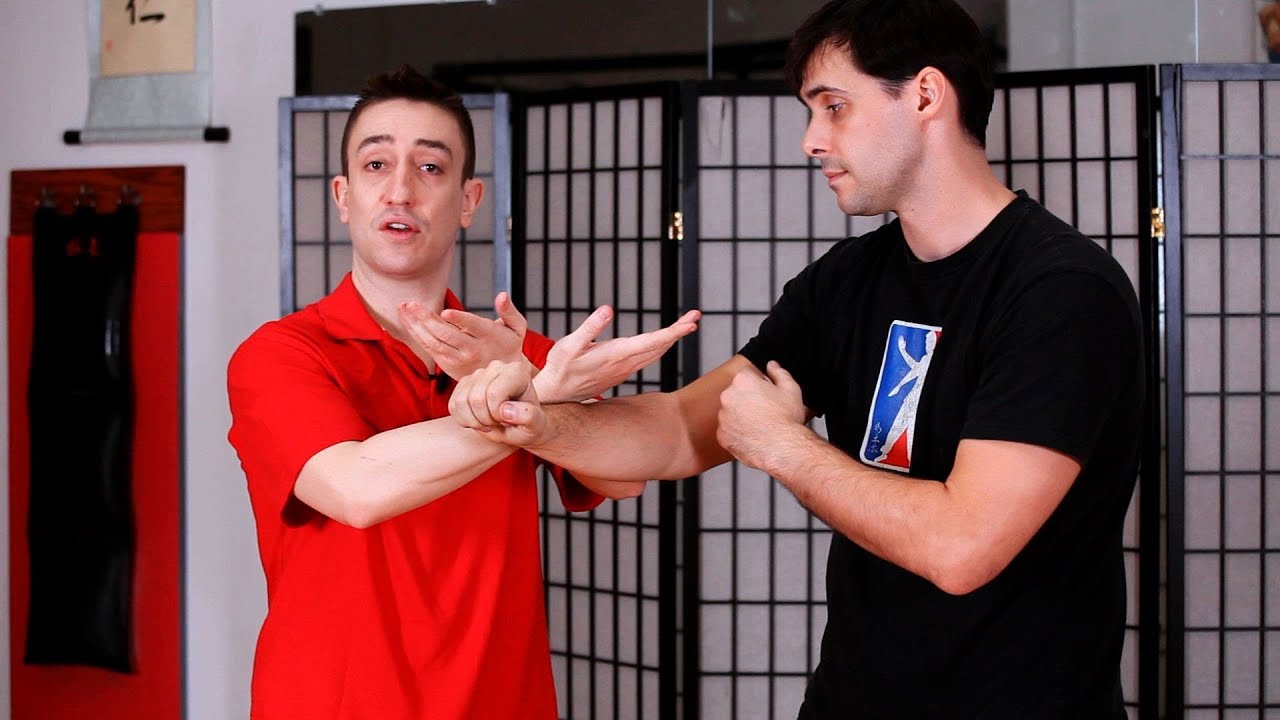How to Do Taan Sau aka Palm Up Hand | Wing Chun
Full Playlist: https://www.youtube.com/playlist?list=PLLALQuK1NDrjD8mIyjOcPsGaJBDQN-6-K
–
–
Watch more How to Do Wing Chun videos: http://www.howcast.com/videos/509865-How-to-Do-Taan-Sau-aka-Palm-Up-Hand-Wing-Chun
Taan Sau or palm-up hand is one of the most common and most practical movements in the Wing Chun system. When you learn the the sin lum tao form you’ll actually see there are three different types of taan sau in Wing Chun.
The first one that you learn is in the very opening of the form, and this one is called the cross taan sau, because, obviously in the form, you’re crossing both your hands. Now, in application, we don’t use two hands like this, we only use one at a time. But in the form we train two hands together simply for saving time. That way we don’t have to train once right, once left and just kill two birds with one stone.
The cross taan sau is primarily for dealing with straight punches. So, if I’m standing and somebody launches a straight punch at me, I’m going to use the cross taan sau like this. This is the one from the beginning of the form. If you see here, this is right on my center line and I’m able to punch my opponent here. My fingers are pointing in the direction of my attack and also in the direction of my opponent. I don’t want to push my taan sau in this direction here, because it can expose an elbow strike to me here. Rather, what I want to do is close up the center line and punch right down the center like this. So, that’s one simple application of the cross taan.
Another one would be, for example, if somebody grapples my arm down and tries to give me a punch and I need to use it in conjunction with a low bong sound, we call this quan sau. But again the taan sau that I’m using here is again the cross taan sau from the beginning of the form. So, that is the simple taan sau from the opening.
The second one you learn is what we call the mid taan sau, where we bring our elbow more to the center and our fingers are point straight ahead of our body. This one at first we use only in Chi Sau training. For example, when the students are single arm Chi Sau, this is kind of the platform for it, but then later when the students progress into double arm Chi Sau, this is the main taan sau that you’re using here, when you roll in double arm Chi Sau.
In the advanced program, in wooden dummy, we actually do apply this one as a fighting technique, but for junior students it’s primarily just for Chi Sau.
The third taan sau we have is called the high taan sau, and this one we use against, for example, long types of attacks. For example, if somebody were to give me a big, wide swing, I could use the taan sau here to defend. Because this is high enough to protect me from this one here while I punch my opponent at the same time. Okay? The reason I can point out with this one is because his elbow doesn’t bend in this direction. That’s why it works for that one there.
So, the high taan sau, we use against big, looping swings. Again, not to be confused with a hook, this is really, mainly for a swing, and it’s the basic application of the three taan saus. In Cantonese, “pan” means to spread or to open up, for example, to spread a table cloth or to open your hand like this.
So, simply it means palm-up hand or open hand.



![[ID: UMAELCrJxt0] Youtube Automatic](https://okumasaati.net/wp-content/uploads/2020/10/id-umaelcrjxt0-youtube-automatic-360x203.jpg)
![[ID: jyq4nZRw3Fo] Youtube Automatic](https://okumasaati.net/wp-content/uploads/2020/10/id-jyq4nzrw3fo-youtube-automatic-360x203.jpg)
![Private: [ID: 10gg2uwLIqM] Youtube Automatic](https://okumasaati.net/wp-content/uploads/2020/10/private-id-10gg2uwliqm-youtube-a-360x203.jpg)
![Private: [ID: R-KNpZeczQk] Youtube Automatic](https://okumasaati.net/wp-content/uploads/2020/10/private-id-r-knpzeczqk-youtube-a-360x203.jpg)
![[ID: M0S8RlFuaVo] Youtube Automatic](https://okumasaati.net/wp-content/uploads/2020/10/id-m0s8rlfuavo-youtube-automatic-360x203.jpg)
![[ID: xg4EJTHlwas] Youtube Automatic](https://okumasaati.net/wp-content/uploads/2020/10/id-xg4ejthlwas-youtube-automatic-360x203.jpg)